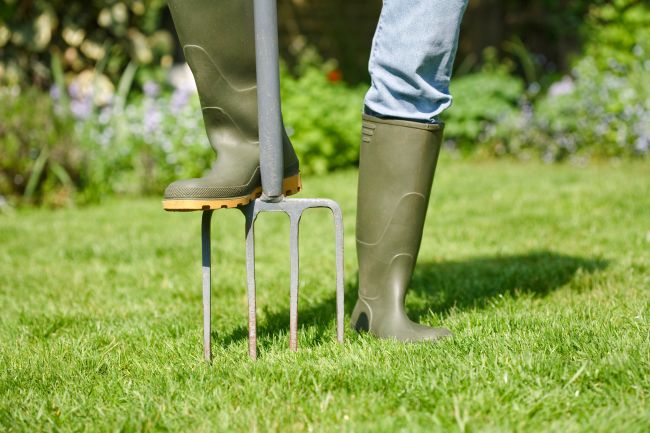Autumn Lawn Care: Preparing Your Garden for Winter

Deep Spiking in the autumn on your lawn helps maintain summer lawn colour
As the days shorten and temperatures begin to drop, autumn is one of the most important times to give your lawn some extra attention. Preparing your grass now will ensure it stays healthy through the colder months and bounces back strong in spring. At GardenAdvice, we recommend a few key steps to keep your lawn in top condition.
1. Adjust Your Mowing Routine
In autumn, gradually raise the height of the cut on your mower. Longer grass blades protect the crown of the plant from frost and encourage stronger root growth. Cutting too short at this time of year can weaken the grass and leave it vulnerable to disease and moss invasion.
2. Aerate the Soil
Autumn is the perfect time to aerate deeply using a garden fork or spiking machine. Push as deep as you can to create channels that allow air and water to penetrate down to the root zone. This encourages roots to grow deeper, improving drought tolerance. It also creates pathways for nutrients such as potash to move down into the soil, helping roots chase and absorb them more effectively.
3. Feed with a Slow-Release Fertiliser
Applying an autumn-specific, slow-release fertiliser ensures your lawn is strengthened for the winter ahead. A mix lower in nitrogen and higher in potash and phosphorus builds strong roots and enhances disease resistance, preparing the grass to survive cold and wet conditions.
4. Remove Leaves and Debris
Fallen leaves may look pretty, but they quickly block out light and trap moisture, creating ideal conditions for moss and fungal diseases. Regularly rake and clear leaves to keep the surface healthy and allow your grass to breathe.
5. Check the Soil pH
Soil pH is a key factor in lawn health. Most lawns thrive at a pH between 6.0 and 6.5. Balanced pH encourages natural bacteria, fungi, and beneficial soil organisms such as earthworms, which all help improve soil structure and recycle nutrients. It also helps keep thatch levels under control, since an active soil ecosystem breaks down organic matter more efficiently.
6. Inspect Thatch Levels
Thatch is the layer of dead grass and roots that can build up at the soil surface. A thin layer is normal, but too much prevents water and nutrients from penetrating the soil. Light scarifying or raking in autumn will help manage thatch and keep the lawn in good condition.
7. Consider Clover for Resilience
With the UK climate becoming increasingly unpredictable, overseeding with micro-clover alongside traditional grass is an excellent option. Clover naturally fixes nitrogen, reducing the need for fertiliser, and it tolerates both drought and waterlogging better than many grasses. It stays green longer in summer and helps create a tougher, more eco-friendly lawn.
Learn more about the benefits of a micro-clover lawn.
8. Topdressing and Overseeding Bare Patches
If your lawn has uneven areas or bare patches, apply a light topdressing of loam, sand, or compost to level the surface. Early autumn is also the perfect time for overseeding. Lightly rake the surface, sow grass seed in early September, and keep the area damp for at least 14 days to ensure good germination. This simple step quickly fills gaps and thickens your lawn before winter.
9. Watch Out for Lawn Pests
Autumn is also the time when several lawn pests can cause damage:
- Leatherjackets (crane fly larvae) feed on grass roots, causing yellow patches. More on leatherjackets Controlling leather jackets and Crane flies
- Chafer grubs attack the root zone and often attract birds and mammals that tear up the turf. More on Chafer grubs
- Ants create mounds that disturb the surface and thin the grass. More on ants in lawns Information on ants on your lawn
Checking for early signs of these pests will help you take preventative action before serious damage occurs.
Summary on autumn lawn care
With the right autumn care — raising your mowing height, deep aeration, feeding, clearing debris, checking soil pH, managing thatch, and overseeding — you’ll protect your lawn through the winter and set it up for a vibrant, healthy display next year. Adding clover and staying alert for pests can make your lawn even more resilient in the face of a changing climate.For more seasonal advice and professional support, visit GardenAdvice.co.uk





















